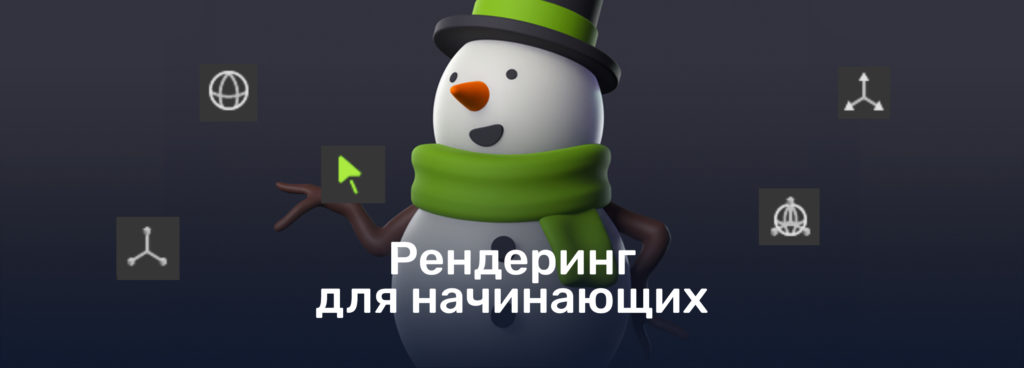
This article is a continuation of the modeling guide prepared by artist and Skills Up School curator Daria Baidukova.
Want more practice and character tutorials? Sign up for
free online speedskulpting classes
which take place at Skills Up School from December 21 to January 22.
We’ve made the snowman in ZBrush, now open Marmoset Toolbag 4 and start rendering, following the detailed instructions.
Glossary
The scene is the workspace in which the model is located.
Navigation
Alt+left mouse button – scene rotation
Alt+wheel – move the scene
Alt+right mouse button (spin the mouse wheel) – zoom in/out
Ctrl+U – show all light sources and cameras
Shift+right mouse button (right/left) – SKY light rotation
Tools
W – Translate
E – Rotate
R – Scale
T – Transform
Q – Select (aka reset transforming tools)
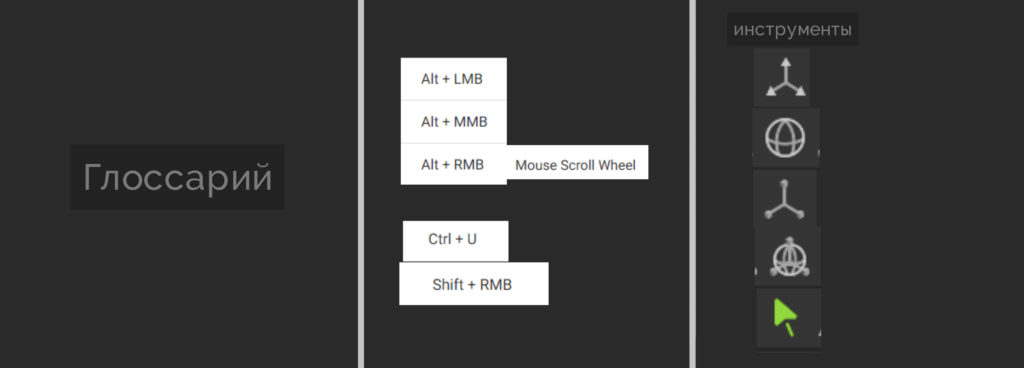
Stage 1. Export
Export our model to ZBrush in Obj format:
- In the Zplugin menu – SubTool Master – Export. In the pop-up menu, check the selected items and click OK;
- Open Marmoset Toolbag 4. In the File tab look for Import model or just drag the file from the folder directly into the program;
- When the model is loaded the first thing we need to do is to check its size. To do this, at the top of the scene, next to the Materials tab, click on the gear and check the Show Scale Reference box.
A gorgeous man with a mustache will appear! Focusing on it, we select our model using the Select tool (Q) and increase Scale (R) – pull the yellow square.
Save the project.
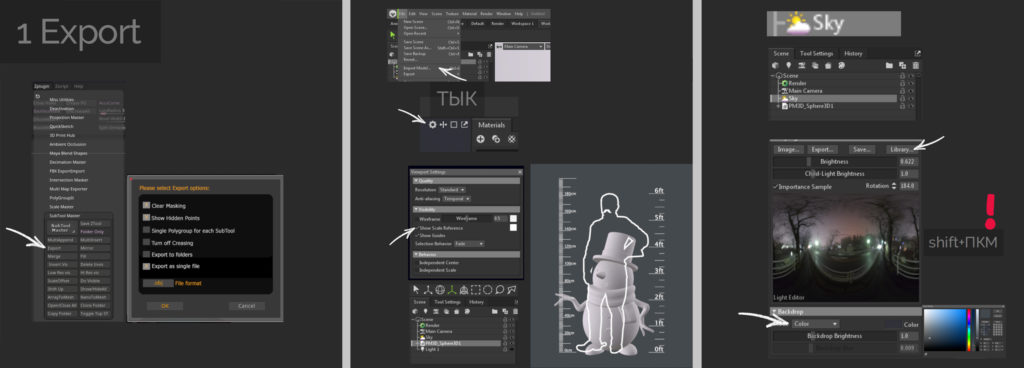
Stage 2. Sky and Light
For better quality light and shadows, it is advisable to select the Full Quality setting (top right on the scene).
Sky
- In the library, you can select a Sky that suits your light and lower its Brightness slightly;
- In the Backdrop tab, change the display of Sky: Mode – Color. You can also change the color to your liking.
With Shift+right mouse button (left/right across the scene) you can rotate the light relative to the model.
Light
- To add a new light source, you need to click on the bulb in the Scene tab. Each new light source appears at the location from where we are looking at our model;
- Using Alt+left mouse button we rotate the scene to the desired position and add a light bulb – we need three pieces;
- We adjust each of the sources to the desired position using the Rotate tool (E).
To see all of our light sources, we need to use the Ctrl+U key combination.
The Diameter parameter is responsible for the softness of shadows and dispersion. The Brightness parameter is responsible for brightness.
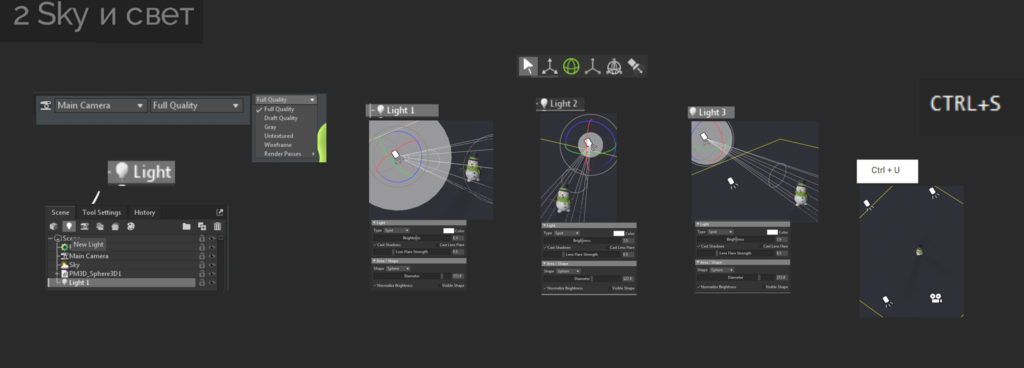
Light 1
The fill light that illuminates our whole model is usually the most diffuse light source. Located directly opposite or slightly to the side relative to the model.
Light 2 and Light 3
Backlight. Its task is to emphasize the shape breaks and create a light contour of the model. Located behind or strongly to the side relative to the model.
Shadow Catcher
You could add a notional floor to the scene so that the snowman doesn’t levitate, but it’s clear that he’s standing. Shadow Catcher creates the shadows that an object casts. Add them by right-clicking in an empty space in the Scene tab and selecting Add Shadow Catcher from the menu. Use Scale(R) to increase the area of the cast shadows.
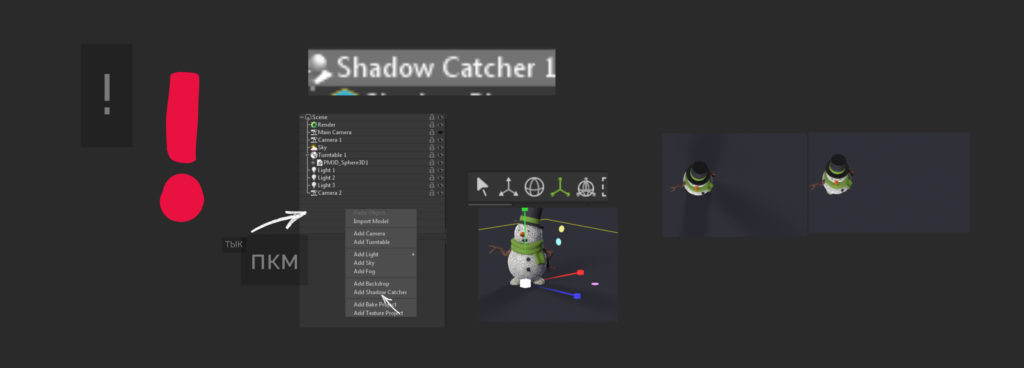
Stage 3. Materials
We can add as many different materials as we want from the library and experiment with them, but since our snowman doesn’t have a UV spread, we’ll customize the materials ourselves.
Add a new material by clicking the + in the Materials tab, and rename it so we understand what it refers to. Apply the material to the desired element by simply dragging it.
Material responsible for clothing elements, eyes, buttons, nose:
- Since they are painted, we need to turn on the color display. In the Albedo tab on the left, select Vertex color;
- In the Microsurface tab, move Roughness (translates to roughness). At the maximum values, the material is fully glossy and therefore fully matte.
Branch hands:
- If suddenly the original color doesn’t fit, we can easily change it.
To do this, in the Albedo tab on the left, select Albedo and click on Colour
in the menu that opens;
- Tweak the Roughness a little bit.
The snowman himself:
- Turn on Vertex color and move Roughness;
- Since snow is not a dense material like gypsum, for example, some of the light passes through it and some is reflected. This makes the shadows and highlights on the material look different. So in the Transmission tab, we select Subsurface Scattering.
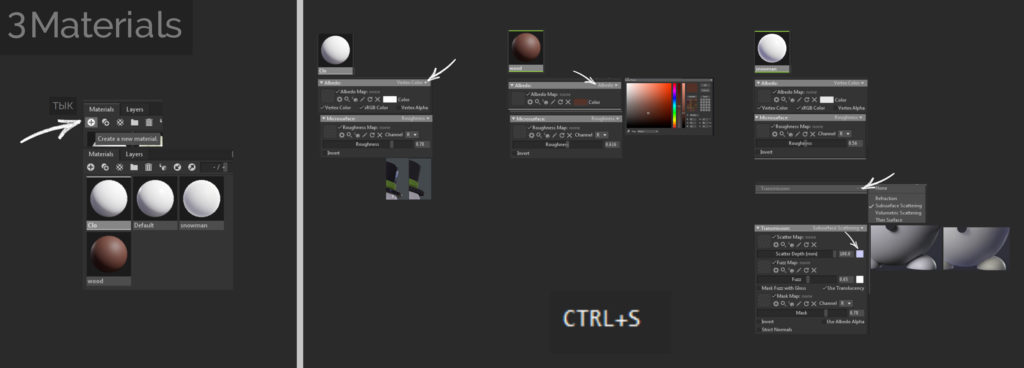
When you’re
to render the character.
to make his ears show through in the light, you’ll need this:
Scatter Depth – how deep the light penetrates and scatters (change its color to a cooler shade);
Fuzz is a reflex;
Mask – intensity.
Stage 4. Camera and Render
- You don’t need to change anything in the camera settings, only in the Post Effect – Color tab you can slightly increase Saturation;
- In the render settings in the Lighting – Ray Tracing tab, enable the Use Ray Tracing option – all to make our lights and shadows more realistic;
- In order to see in what resolution our model will be rendered, we need to enable Safe Frame in the Camera menu (Lens tab). You can change the dimensions in the Render menu (Output – Image tab)
So, the lights are out, the materials are set up, all the parameters are set. In the Render menu, look for the Render Cameras tab and make sure the camera we’ve been setting up all along is there – it should be selected in the scene as well.
Look for the Output tab – Image – Select the path to save – Check the format (PNG). Click on Render Image.
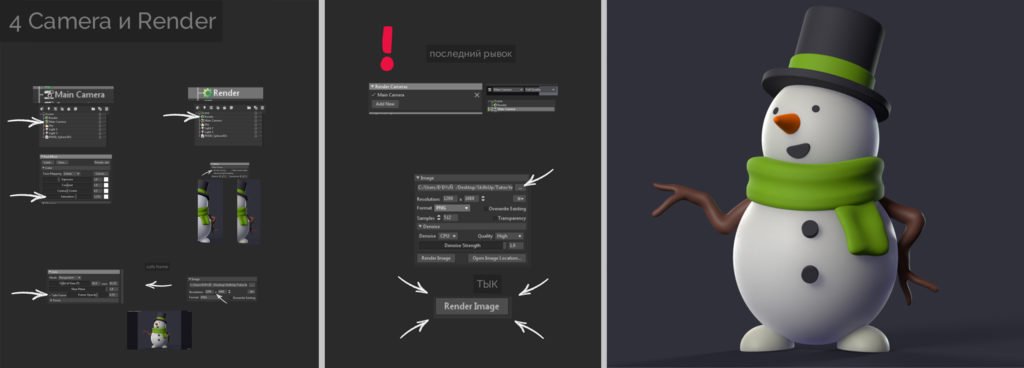
Your snowman is beautiful! You’re beautiful!
Learn more about free online speedskulpting classes for beginners
